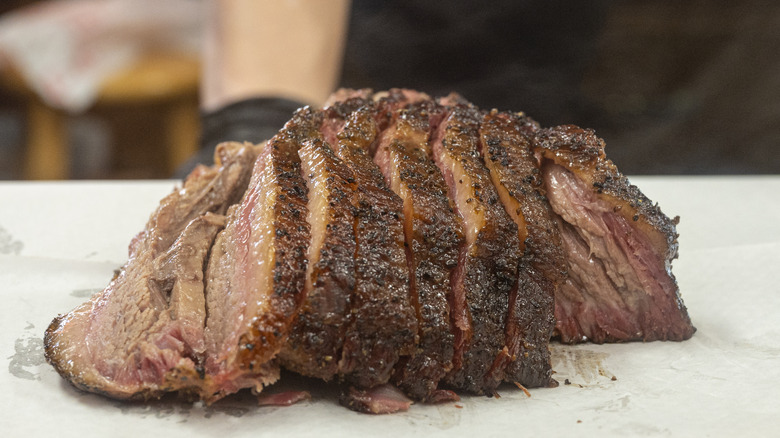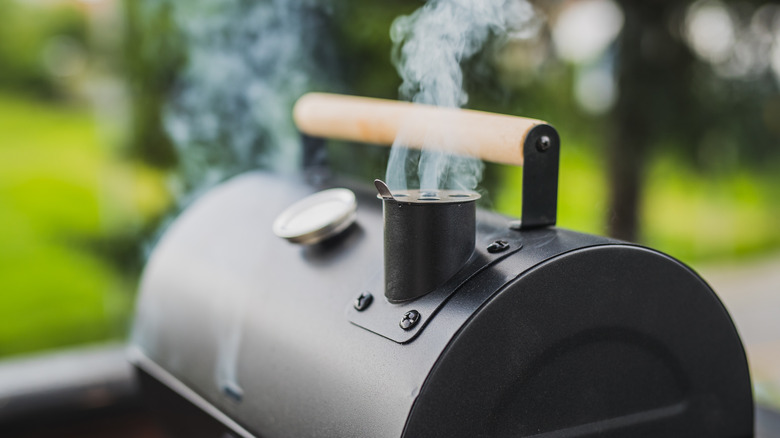The Temperature Mistake To Avoid With Your Smoker
Smoking meat in your own backyard involves a lot of patience, attention to detail, education, and practice, but it's not an impossible skill to learn. Besides selecting and prepping your cut of meat — we recommend brisket, pork shoulder, or spare ribs — you've either got to turn your charcoal grill into a smoker or invest in a new (and often quite pricey) piece of equipment.
If you're new to smoking, just know that while the process may be laborious, the end product is worth the time and effort. While cooking methods like frying or grilling rely on dry, direct heat, smoking instead uses low, indirect heat, per MasterClass, and results in tender, juicy meat that's encased in a thick, flavorful crust or bark. While there are many important components to keep in mind when smoking meat, there's one common temperature mistake you want to avoid when smoking for the best results possible.
Don't overheat your smoker
Smoking is a low and slow process. Overheating your smoker and cooking your food at too high of a temperature is one of the most common mistakes you can make, per Food & Wine, and can cause your meats to not only turn out dry but retain less of that coveted smoky flavor. The good news is, this cooking faux pas can be avoided.
Plan ahead and give yourself more time than you think you need. In order to allow your meat to cook low and slow, monitor the temperature of your smoker closely, and be sure to invest in a quality meat thermometer. You can also use beer to elevate smoked meats, which also helps keep them from drying out while cooking.
While the time and temperature at which you smoke meats will vary based on the cut, a general rule of thumb is to allow at least six to eight hours for most meats to smoke, per The Spruce Eats, at around 200 to 220 degrees Fahrenheit. If you're up to the challenge, try this recipe for smoked brisket or these smoked pork tacos and you'll be a pitmaster in no time.

